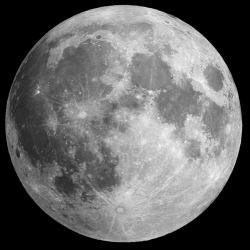
Mining water ice from asteroids and the lunar poles could provide cheap fuel for probes and could even fuel space travel or help manoeuvre satellites. Unlike steam power on Earth, where the build-up of pressure drives cylinders and pistons, the thrust would come from steam being ejected into space, propelling the craft.
Because gravity is so low on the lunar surface, and much less in space, just a small push is needed to get a spacecraft going. The water would be heated using solar panels and vented through a nozzle. In a vacuum it could give a couple of minutes of thrust and would allow an 80kg Mars lander to move up to 30km on a single tank.
Dr Phil Metzger, of the University of South Florida is part of Nasa’s ‘Swamp Works’ team which has been tasked with working out how to make the most of materials available on the Moon. “We need to stop relying on our own planet for resources,” he told a meeting of the Royal Astronomical Society in London.
“We can use near Earth asteroids for solar thermal steam propulsion directly. It’s a very simple system and could help small spacecraft refuel in space. It’s also very practical to use on a planet.
Scientists are increasingly viewing the Moon as an important stepping stone in a manned mission to Mars. In January the European Space Agency announced plans to build a 3D printed lunar village by 2030 made from Moon rock. From there missions would set out to mine water, metals and minerals needed to help refuel spacecraft on their way further out into the solar system.
Dr Paul Spudis of the Lunar and Planetary Institute in Houston, believes that that first step will be to send robotic probes to the Moon to search for water and supplies before building a base and then slowly venturing further afield.
“The current belief that we are on our way to Mars is simply mistaken,” he said. “We will never get there on an Apollo-style mission, it’s just a bridge to far. If we are going to get to Mars we need to use smaller incremental steps.
“One of the big surprises of the last 10 years was to find that water appears in large quantities on the Moon.
“Water is one of the most useful substances you can find in space. It is very heavy to get off the Earth so if you can find it somewhere else it is far better. You can drink it, you can use it as fuel, you can use it to shield your habitat from radiation.
“We want to start using robots not just to explore but to do practical work like prospecting for water. You can operate machinery on the Moon fairly easily because there is only a three second communication delay with Earth.
“We need to set up this system of a base on the Moon where people can go not just to visit but live there permanently.”
Olivier de Weck, professor of aeronautics and astronautics at MIT, calculated that astronauts going to Mars could launch from Earth with 68 per cent less mass if they were able to collect fuel from a Moon base on the way. It goes against Nasa’s current plans to carry everything with them in one go.
His system proposes planting depots and staging posts along the way, possibly on the Mars’ moons Deimos and Phobos, or at ‘Legrange points’, areas of space where the gravity between planets or moons is equal and space stations could be ‘parked’ without being tugged in either direction.
“This is completely against the established common wisdom of how to go to Mars, which is a straight shot to Mars, carry everything with you," he said. "The Apollo mission was very successful but going to Mars will be much more complex
“Bringing everything from Earth is not sustainable, we need to build a lunar system or interplanetary supply chain network.
“In practical terms you could harvest oxygen and hydrogen on the Moon and transfer it to a Legrange Point. On the outbound journey a manned mission could pass by that point and fuel up.
“Going to Mars via the Moon could bring big savings. When we first ran the calculations we were incredulous of how much weight could be saved. But it works.”
